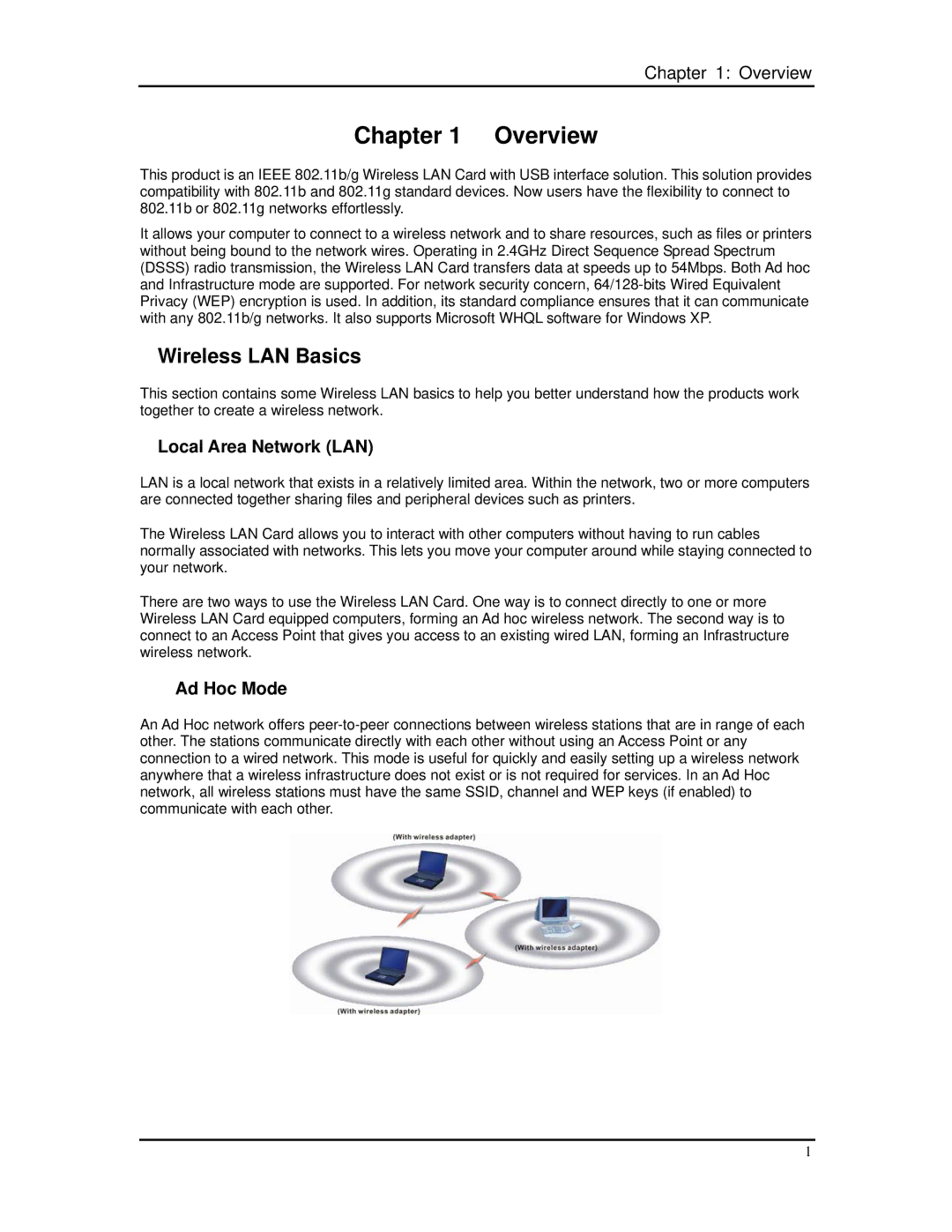
Chapter 1: Overview
Chapter 1 Overview
This product is an IEEE 802.11b/g Wireless LAN Card with USB interface solution. This solution provides compatibility with 802.11b and 802.11g standard devices. Now users have the flexibility to connect to 802.11b or 802.11g networks effortlessly.
It allows your computer to connect to a wireless network and to share resources, such as files or printers without being bound to the network wires. Operating in 2.4GHz Direct Sequence Spread Spectrum (DSSS) radio transmission, the Wireless LAN Card transfers data at speeds up to 54Mbps. Both Ad hoc and Infrastructure mode are supported. For network security concern,
Wireless LAN Basics
This section contains some Wireless LAN basics to help you better understand how the products work together to create a wireless network.
Local Area Network (LAN)
LAN is a local network that exists in a relatively limited area. Within the network, two or more computers are connected together sharing files and peripheral devices such as printers.
The Wireless LAN Card allows you to interact with other computers without having to run cables normally associated with networks. This lets you move your computer around while staying connected to your network.
There are two ways to use the Wireless LAN Card. One way is to connect directly to one or more Wireless LAN Card equipped computers, forming an Ad hoc wireless network. The second way is to connect to an Access Point that gives you access to an existing wired LAN, forming an Infrastructure wireless network.
Ad Hoc Mode
An Ad Hoc network offers
1
